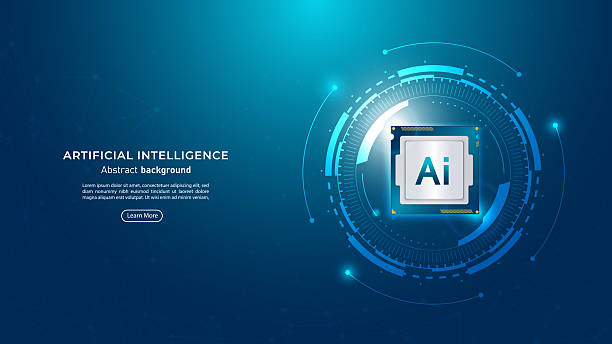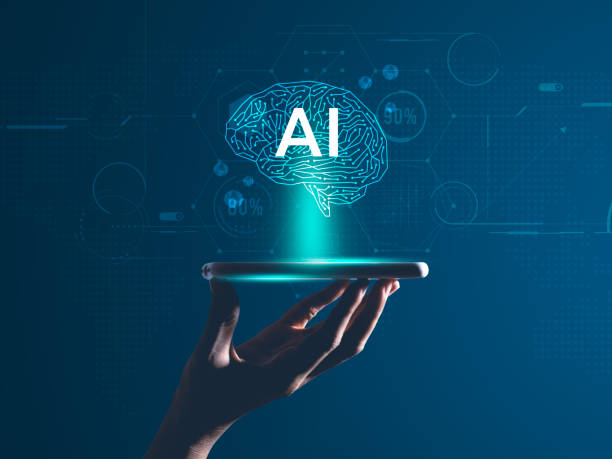What is Artificial Intelligence? Definition and Basic Concepts
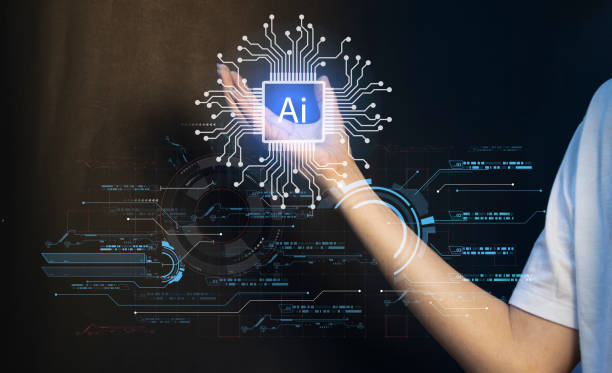
What is Artificial Intelligence? Definition and Basic Concepts
#Artificial_Intelligence (AI) is a branch of computer science that focuses on building machines capable of performing tasks that typically require human intelligence.
These tasks include learning, problem-solving, pattern recognition, natural language understanding, and decision-making.
In other words, the goal of AI is to create systems that can think and act like humans.
Wikipedia defines artificial intelligence as the effort to replicate or simulate human intelligence in machines.
Artificial intelligence is generally divided into two main categories: #Weak_AI and #Strong_AI.
Weak AI refers to systems designed to perform a specific task, such as facial recognition or language translation.
These systems are not capable of performing tasks outside their defined scope.
In contrast, Strong AI refers to systems that possess general intelligence and can perform any task a human can.
Achieving Strong AI is still a major challenge in the field.
Basic concepts used in artificial intelligence include machine learning algorithms, artificial neural networks, natural language processing (NLP), and computer vision.
Machine learning enables machines to learn from data without explicit programming.
Artificial neural networks are structures inspired by the human brain and are used for pattern recognition and learning.
Natural language processing allows machines to understand and generate human language.
Computer vision enables machines to see and interpret images.
Artificial intelligence is currently used in many industries and fields, including medicine, automotive, finance, education, and entertainment.
With technological advancements, the role of #Artificial_Intelligence in our lives is expected to become increasingly prominent.
Does your current website convert visitors into customers, or does it drive them away? Solve this problem forever with professional corporate website design by Rasawweb!
✅ Build strong credibility and branding
✅ Attract target customers and increase sales
⚡ Get a free consultation now!
Applications of Artificial Intelligence in Various Industries
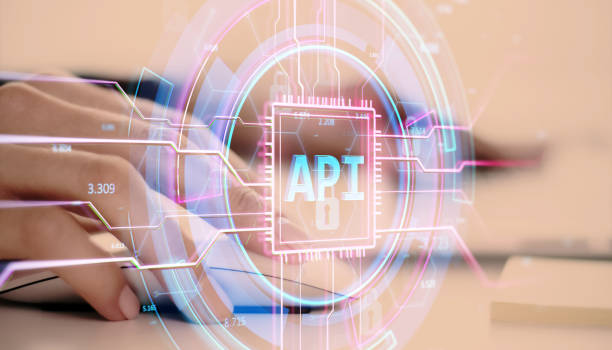
Applications of Artificial Intelligence in Various Industries
#Artificial_Intelligence (AI) is widely used in various industries and has brought about significant transformations in them.
In the medical industry, AI can assist doctors in diagnosing diseases, prescribing medications, and performing surgeries.
AI systems can analyze medical images such as MRI and CT Scans and detect disease patterns.
Additionally, surgical robots, with the help of AI, can perform complex surgeries with greater precision.
In the automotive industry, AI plays a key role in the development of self-driving cars.
Self-driving cars use AI algorithms to detect their surroundings, navigate, and control the vehicle.
These vehicles can drive more safely and help reduce accidents.
Furthermore, AI is also used in automotive production lines to improve manufacturing processes and enhance product quality.
In the financial industry, AI is used for fraud detection, risk management, and providing personalized financial services.
AI systems can identify suspicious patterns in financial transactions and prevent fraud.
Additionally, AI can help investors in making investment decisions and managing financial risks.
In the education industry, AI can help teachers provide personalized instruction and assess student performance.
AI systems can identify each student’s strengths and weaknesses and provide appropriate educational content.
Furthermore, AI can help automate the grading of assignments and exams, freeing up teachers’ time.
In addition to these industries, AI has extensive applications in other fields such as retail, manufacturing, agriculture, and energy.
Overall, #Artificial_Intelligence has the potential to improve efficiency, productivity, and quality across various industries.
Machine Learning and Its Algorithm Types

Machine Learning and Its Algorithm Types
#Machine_Learning is a subset of #Artificial_Intelligence that enables machines to learn from data without explicit programming.
In fact, machines use machine learning algorithms to identify patterns and relationships in data and make decisions based on them.
Wikipedia defines machine learning as the study of computer algorithms that automatically improve through experience.
Machine learning algorithms are generally divided into three main categories: Supervised Learning, Unsupervised Learning, and Reinforcement Learning.
In supervised learning, the machine is trained using labeled data.
Labeled data includes inputs and expected outputs.
The goal of these algorithms is to learn a function that can predict correct outputs for new inputs.
In unsupervised learning, the machine is trained using unlabeled data.
The goal of these algorithms is to identify patterns and structures within the data.
Clustering algorithms and dimensionality reduction are examples of unsupervised learning algorithms.
In reinforcement learning, the machine learns by interacting with its environment.
The machine performs a series of actions and improves its strategy based on the feedback it receives (reward or penalty).
This type of learning is suitable for training robots and control systems.
Below is a table of machine learning algorithm types:
| Learning Type | Common Algorithms | Applications |
|---|---|---|
| Supervised | Linear Regression, Logistic Regression, Support Vector Machine (SVM), Decision Tree | Price Prediction, Fraud Detection, Image Classification |
| Unsupervised | K-means Clustering, Principal Component Analysis (PCA), Hierarchical Clustering | Customer Segmentation, Dimensionality Reduction, Anomaly Detection |
| Reinforcement | Q-learning, Deep Reinforcement Learning | Computer Games, Robot Control, Strategy Optimization |
Deep Neural Networks and Their Applications

Deep Neural Networks and Their Applications
#Deep_Neural_Networks are a type of artificial neural network that have many hidden layers.
These networks are capable of learning complex patterns in data and perform exceptionally well in many areas.
Wikipedia defines deep learning as a type of machine learning that uses multi-layered neural networks to analyze data.
Deep neural networks have widespread applications in fields such as computer vision, natural language processing, and speech recognition.
In computer vision, these networks can identify images, detect objects, and understand scenes.
In natural language processing, deep neural networks can understand and generate human language, translate texts, and answer questions.
In speech recognition, these networks can recognize sounds and convert speech to text.
One of the well-known architectures of deep neural networks is Convolutional Neural Networks (CNNs), which are highly suitable for processing images and videos.
CNNs use convolutional layers to extract features from images and can recognize various patterns.
Recurrent Neural Networks (RNNs) are another type of deep neural network suitable for processing sequential data such as text and audio.
RNNs use recurrent layers to retain information about previous steps and can learn temporal patterns.
Due to their high ability to learn complex patterns, deep neural networks are used in many industries and fields.
Applications of these networks include face recognition, object detection, machine translation, text generation, speech recognition, autonomous driving, and drug discovery.
However, it should be noted that training deep neural networks requires large amounts of data and high computational power.
Also, these networks may easily overfit training data and perform poorly on new data.
To prevent this problem, techniques such as Regularization and Dropout are used.
Are you bothered by losing customers due to your e-commerce site’s outdated appearance or slow speed? Rasawweb’s expert team solves these problems with professional e-commerce site design!
✅ Increase customer trust and your brand’s credibility
✅ Blazing speed and excellent user experience
Get a free consultation with Rasawweb now ⚡
Natural Language Processing and Its Applications in Artificial Intelligence
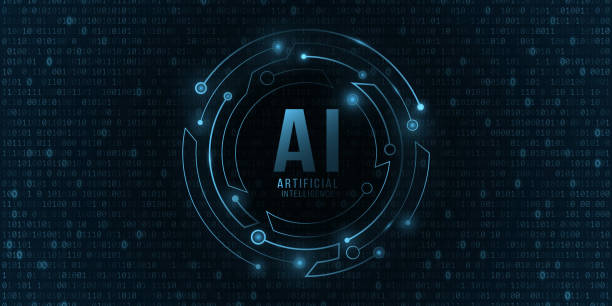
Natural Language Processing and Its Applications in Artificial Intelligence
#Natural_Language_Processing (NLP) is a branch of #Artificial_Intelligence that enables machines to understand and generate human language.
NLP includes techniques and algorithms used for analyzing, interpreting, and generating text and speech.
Wikipedia defines natural language processing as a branch of artificial intelligence that deals with the interaction between computers and human languages.
Natural language processing has applications in many fields, including machine translation, sentiment analysis, question answering, text summarization, and speech recognition.
In machine translation, NLP enables machines to translate text from one language to another.
In sentiment analysis, NLP allows machines to detect emotions in a text, such as positive, negative, or neutral.
In question answering, NLP enables machines to understand questions and provide appropriate answers.
In text summarization, NLP allows machines to condense a long text into a short summary.
In speech recognition, NLP enables machines to recognize sounds and convert speech to text.
Techniques used in NLP include Syntactic Analysis, Semantic Analysis, and Pragmatic Analysis.
Syntactic analysis examines the grammatical structure of a sentence.
Semantic analysis examines the meaning of a sentence.
Pragmatic analysis examines the speaker’s intent and the context of the speech.
One of the main challenges in NLP is the ambiguity of human language.
A word or sentence can have different meanings, and its meaning can change depending on the context.
To solve this problem, techniques such as disambiguation and contextualization are used.
With technological advancements, NLP is becoming a powerful tool for human-machine interaction.
Future applications of NLP include the development of intelligent virtual assistants, real-time translation systems, and text data analysis systems.
Computer Vision and Image Recognition with Artificial Intelligence

Computer Vision and Image Recognition with Artificial Intelligence
#Computer_Vision is a branch of #Artificial_Intelligence that enables machines to see, interpret, and understand images.
Computer vision includes techniques and algorithms used for image processing, object detection, facial recognition, motion detection, and 3D scene reconstruction.
Wikipedia defines computer vision as a branch of artificial intelligence that allows computers to obtain information from digital images and videos.
Computer vision has applications in many fields, including automotive, medicine, security, robotics, and computer games.
In the automotive industry, computer vision is used for developing self-driving cars.
In medicine, computer vision is used for diagnosing diseases and analyzing medical images.
In security, computer vision is used for facial recognition and video surveillance.
In robotics, computer vision is used for guiding robots and performing complex tasks.
In computer games, computer vision is used for creating realistic characters and interacting with the game environment.
Techniques used in computer vision include image processing, feature detection, image classification, and image segmentation.
Image processing focuses on improving image quality and removing noise.
Feature detection focuses on identifying important features in images, such as edges, corners, and textures.
Image classification assigns a category or label to an image.
Image segmentation divides an image into different regions based on visual characteristics.
One of the main challenges in computer vision is variations in lighting, viewing angle, and image scale.
To solve this problem, techniques such as invariance and augmentation are used.
With technological advancements, computer vision is becoming a powerful tool for understanding the world around us.
Future applications of computer vision include the development of automatic facial recognition systems, advanced autonomous driving systems, and automated quality inspection systems.
Artificial Intelligence and Ethics: Considerations and Challenges

Artificial Intelligence and Ethics: Considerations and Challenges
With the rapid advancement of #Artificial_Intelligence (AI), associated ethical issues have also gained more importance.
AI can have profound impacts on society, and it is essential to consider ethical implications in its development and use.
One of the most important ethical issues is discrimination.
AI algorithms can reproduce and even amplify existing societal biases based on their training data.
For example, an automated hiring system might unintentionally reject individuals of a particular race or gender.
Another issue raised in relation to artificial intelligence is privacy.
AI systems often require collecting and analyzing large amounts of data, which can lead to violations of individual privacy.
For example, facial recognition systems can covertly identify individuals in public places.
Furthermore, the issue of accountability is also raised in relation to artificial intelligence.
If an AI system makes a wrong decision and causes harm, who is responsible? Is the system’s developer responsible, or its user? This issue still has no clear answer and requires further investigation.
Below is another table showing some ethical considerations and challenges related to artificial intelligence:
| Ethical Consideration | Challenge | Proposed Solution |
|---|---|---|
| Discrimination | Reproduction and intensification of existing societal discrimination | Using diverse training data and eliminating discriminatory factors |
| Privacy | Violation of individuals’ privacy through data collection and analysis | Implementing privacy-preserving techniques and adhering to relevant laws |
| Accountability | Unclear responsibility in case of errors or damages | Developing laws and regulations related to accountability in AI |
To address these challenges, it is essential to consider ethical implications in the development and use of artificial intelligence and employ techniques such as transparency, accountability, and interpretability.
Also, appropriate laws and regulations must be formulated to govern the use of artificial intelligence.
The Future of Artificial Intelligence and Its Impact on Our Lives

The Future of Artificial Intelligence and Its Impact on Our Lives
#Artificial_Intelligence (AI) currently has significant impacts on our lives, and it is expected that these impacts will become greater and more widespread in the future.
AI can improve our lives in many areas, including healthcare, education, transportation, manufacturing, and services.
In the future, AI can help doctors diagnose diseases faster and more accurately.
AI systems can analyze medical images and detect disease patterns.
Additionally, surgical robots, with the help of AI, can perform complex surgeries with greater precision.
As a result, AI can contribute to improving the quality of treatment and increasing life expectancy.
In the field of education, AI can help teachers provide personalized instruction and assess student performance.
AI systems can identify each student’s strengths and weaknesses and provide appropriate educational content.
Furthermore, AI can help automate the grading of assignments and exams, freeing up teachers’ time.
As a result, AI can contribute to improving the quality of education and increasing student motivation.
In the field of transportation, AI can contribute to the development of self-driving cars and the improvement of public transportation systems.
Self-driving cars can drive more safely and help reduce accidents.
Additionally, AI systems can help optimize public transportation routes and reduce traffic.
As a result, AI can contribute to improving the safety and efficiency of transportation.
In the field of manufacturing, AI can help improve efficiency and reduce costs.
AI systems can optimize production processes and prevent errors.
Additionally, industrial robots, with the help of AI, can perform repetitive and dangerous tasks.
As a result, AI can contribute to increasing productivity and reducing manufacturing costs.
In the field of services, AI can help provide better and faster services.
AI systems can answer customer questions and solve their problems.
Additionally, intelligent virtual assistants can help individuals with their daily tasks.
As a result, AI can contribute to improving customer satisfaction and increasing service efficiency.
However, it should be noted that the development and use of artificial intelligence require attention to ethical and social issues.
It is essential to consider ethical implications in the development of AI and employ techniques such as transparency, accountability, and interpretability.
Also, appropriate laws and regulations must be formulated to govern the use of artificial intelligence.
Do you know that customers’ first impression of your company is your website? Double your business’s credibility with a powerful corporate website from Rasawweb!
✅ Custom and eye-catching design tailored to your brand
✅ Stunning speed and excellent user experience
⚡ Get a free consultation now!
How to Learn Artificial Intelligence? Resources and Guidance
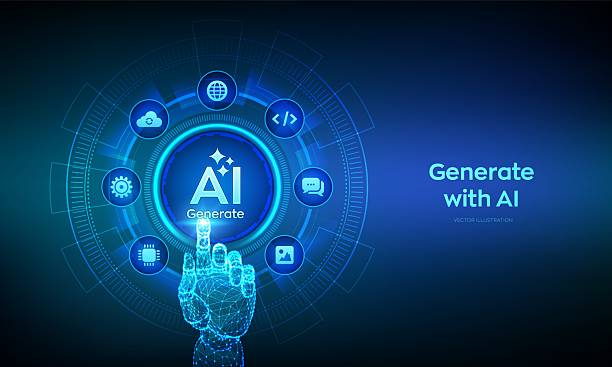
How to Learn Artificial Intelligence? Resources and Guidance
Learning #Artificial_Intelligence (AI) can be an engaging and rewarding challenge.
Given the growing importance of AI in various industries, having knowledge and skills in this field can create many career opportunities for you.
To start learning AI, you can use various resources, including online courses, books, articles, and practical projects.
Online courses are one of the best ways to learn artificial intelligence.
Reputable websites such as Coursera, edX, Udacity, and Udemy offer a variety of courses in AI.
These courses usually include instructional videos, exercises, and practical projects, helping you learn basic AI concepts and enhance your practical skills.
Books can also be a valuable resource for learning artificial intelligence.
Many books exist on AI that explain basic concepts, algorithms, and various techniques.
Some well-known books in this field include “Artificial Intelligence: A Modern Approach” by Stuart Russell and Peter Norvig, and “Hands-On Machine Learning with Scikit-Learn, Keras, and TensorFlow” by Aurélien Géron.
Scientific articles can also help you gain a deeper understanding of AI concepts.
Websites like arXiv and Google Scholar publish many articles in the field of artificial intelligence.
By studying these articles, you can stay informed about the latest advancements in AI and find new ideas for your projects.
Practical projects are one of the best ways to learn artificial intelligence.
By undertaking practical projects, you can apply theoretical concepts and strengthen your practical skills.
You can start with simple projects like image recognition or price prediction and then move on to more complex projects like developing an autonomous system.
In addition to these resources, you can also use online forums and groups to learn artificial intelligence.
In these forums, you can connect with other people interested in AI, ask your questions, and benefit from their experiences.
To succeed in learning artificial intelligence, it is essential to persevere and consistently put in effort.
AI is a vast and complex field, and learning it requires time and dedication.
But with the right resources and perseverance, you can become an AI expert.
The Trend of AI Development in Iran: Opportunities and Challenges
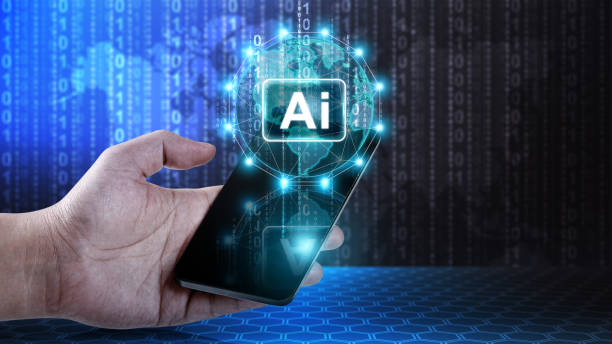
The Trend of AI Development in Iran: Opportunities and Challenges
The development of #Artificial_Intelligence (AI) in Iran is progressing at an accelerating pace.
Given the country’s high potential in skilled human resources and information technology infrastructure, Iran can become one of the leading countries in artificial intelligence in the region.
Many opportunities exist for AI development in Iran.
Iran has a young and educated workforce interested in artificial intelligence.
Additionally, Iran possesses suitable information technology infrastructure that can support AI development.
Furthermore, Iran faces specific problems and challenges that can be solved using artificial intelligence, such as issues related to agriculture, industry, and healthcare.
However, challenges also exist in the path of AI development in Iran.
One of the most important challenges is the lack of investment in artificial intelligence.
AI development requires significant investment in research and development, information technology infrastructure, and training skilled human resources.
Another challenge is the scarcity of high-quality and accessible data.
AI algorithms need large amounts of data for learning, and a lack of quality data can hinder AI development.
To overcome these challenges, it is necessary for the government and the private sector to collaborate to increase investment in artificial intelligence and improve information technology infrastructure.
Also, actions must be taken to collect and disseminate high-quality data.
In addition, it is essential to strengthen the training of skilled human resources in artificial intelligence.
Universities and educational centers should offer appropriate AI training courses and prepare students for entry into the job market.
AI development in Iran can contribute to improving people’s quality of life and the country’s economic development.
By using artificial intelligence, various problems and challenges can be solved, and new opportunities for growth and development can be created.
Frequently Asked Questions
| Question | Answer |
|---|---|
| 1. What is Artificial Intelligence (AI)? | It is a branch of computer science that aims to create machines capable of simulating human intelligence and performing tasks that require human thinking, such as learning, problem-solving, and decision-making. |
| 2. What are the main types of Artificial Intelligence? | They can be classified into Narrow AI (Weak AI) which focuses on a specific task, General AI (Strong AI) which possesses comprehensive human capabilities, and Super AI which surpasses human intelligence. |
| 3. Mention some common applications of Artificial Intelligence in our daily lives. | These include voice assistants (like Siri and Alexa), recommendation systems (like Netflix and Amazon), self-driving cars, facial recognition systems, and spam filters. |
| 4. What is the difference between Artificial Intelligence and Machine Learning? | Artificial Intelligence is the broader concept of creating intelligent machines, while Machine Learning is a subset of AI that focuses on enabling systems to learn from data without explicit programming. |
| 5. What is Deep Learning? | It is a subset of Machine Learning that uses multi-layered artificial neural networks (deep neural networks) to process data and discover complex patterns, used in image and speech recognition. |
| 6. What are the main benefits of Artificial Intelligence? | Improving efficiency and productivity, automating repetitive tasks, making better decisions based on big data analysis, and developing solutions for complex problems in fields such as medicine and science. |
| 7. What are the main challenges facing the development and deployment of Artificial Intelligence? | These include the need for massive amounts of high-quality data, privacy and security issues, bias in data and algorithms, and high development and maintenance costs. |
| 8. Does Artificial Intelligence raise ethical or social concerns? | Yes, it raises concerns related to privacy, algorithmic bias, job displacement due to automation, accountability for errors made by intelligent systems, and the need for a regulatory framework. |
| 9. How can Artificial Intelligence affect the future of the job market? | It can lead to the automation of some routine jobs, but it will also create new jobs that require advanced skills in developing, operating, and maintaining AI systems. |
| 10. What are some modern or promising technologies in the field of Artificial Intelligence? | These include advanced Natural Language Processing (NLP) (such as large language models like ChatGPT), computer vision, robotics, and Generative AI. |
And other advertising services of Rasa Web advertising agency
- Smart Digital Branding: An innovative service to increase user engagement through the use of real data.
- Smart Content Strategy: A specialized service for growth and increasing click-through rates based on user experience customization.
- Smart Sales Automation: An effective tool for online growth with the help of attractive user interface design.
- Smart Advertorial: An effective tool for campaign management with the help of SEO-driven content strategy.
- Smart Content Strategy: Revolutionize click-through rates with the help of attractive user interface design.
And over hundreds of other services in the field of internet advertising, advertising consulting, and organizational solutions
Internet Advertising | Advertising Strategy | Advertorial
Resources
AI Articles on Digiato
AI News on Zoomit
AI from ITiran’s Perspective
AI Applications at Varna Studio
? To reach the pinnacle of digital success, Rasawweb Digital Marketing Agency is with your business with specialized services such as SEO-optimized website design.
📍 Tehran, Mirdamad Street, next to Central Bank, Southern Kazeroun Alley, Ramin Alley, No. 6

